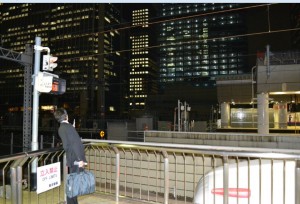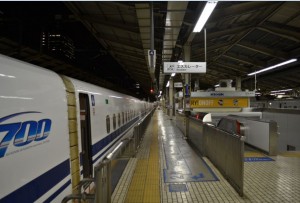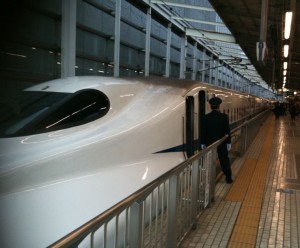Japan – to JR Pass or Not
JR Pass is the famous Japan Rail Pass that can only be purchased abroad and used by foreign tourists and Japanese nationals living in a foreign country.
I struggled a lot whether to purchase a JR pass or not driving myself crazy and my wife as well in the process. I made a spreadsheet* having all possible combinations and in the end I decided to go for the ‘E-Voucher for Kyoto Bullet Train Open Ticket Package & Kyoto Sightseeing One-day Pass’.
Kyoto was the only city in Japan beside Tokyo that I wanted to visit and I would have had time for during my 7 day trip to Japan. And this voucher was the best choice in the end, as I could take any train (JR Pass limits you) so when I left Kyoto back to Tokyo I did not even bother to look at the schedule, I think it was a high speed train evey 10-20 min.
‘Shinkansen’, one of the first Japanese words I have ever learned. Now there are high speed trains in many countries but they were the first.
*I read in a book that people spend more time deciding what microwave to buy than analyzing their investments. This is true for me too. I spent thousands of $ on shares without thinking too much (and of course I lost) but for saving a few $ I spent lots of time.




I’ve always found it to be totally worth it, but then again, I was going from Tokyo, to Hakata (Fukuoka) to Osaka, and back again. It more than paid for itself. I just wish you could use it with Nozomi trains.
Beautiful train. Make sure to see the monkeys at Kyoto
There are far too many sights to see in Kyoto for just a one day visit.
In anycase, try to catch the first train out from Tokyo – usually around 5:30 AM so as to have more time in Kyoto.
@Mike The monkeys there are crazy! (I went to the Kyoto Zoo).
I went to the website to check this out and one of the terms is
“No baggage carriage service is included.”
what does that mean? I can’t bring my luggage bag?
My wife and I just did a week (July 3 – 12 in Japan, going from the Haneda Airport Tokyo, We took multiple subways and JR lines the first two days in Tokyo, We went to Hakone, Kyoto and Osaka. Like you, we debated buying the pass vs. paying separate. Prior to our trip we went to http://www.hyperdia.com/cgi/en/search.html it can give you a basic route and cost for each part of your trip including reserved seats, etc etc. Very extensive information. SOmeone on Trip Advisor has a more extensive posting. End Result we probably saved about $300 over the cost of a JR Pass. Enjoy your trip.
@ket
You can, I had baggages with me.
@Moody
I stayed more than 1 day (3 days) the one day is only for the bus pass.
Great point the time spent, I painfully see myself in that.
The rail pass variants do nothing to reduce confusion, this is the first I had heard of the Kyoto one.
That pass information is very helpful. Any hotel recommendations for Kyoto? Hyatt/Westin/other?
@Panda
See my next post.
@Jeff – The regional passes are often good to check if you don’t need the Tokyo to Kyoto route. The new JR Sanyo-Shikoku-Kyushu Rail Pass offers Nozomi access with reserved seating and that’s pretty comfortable on the N700’s.
The main difference with the E-Voucher you mentioned is that it is only for non-reserved seats, while the JR pass allows you to have a seat reservation, but not to travel on the Nozomi and Mizuho trains.
The reserved seat part is only relevant if you want to travel during rush hour or a busy travel season.
If taking the Shinkansen, maybe, but otherwise it depends on what city you’re in. The town where I stayed in Kanagawa prefecture, for instance, was best serviced by the private Keikyu Railway and many pf the local railroads in Japan (particularly those servicing out-of-reach places) are run by private operaters not covered by the JR pass